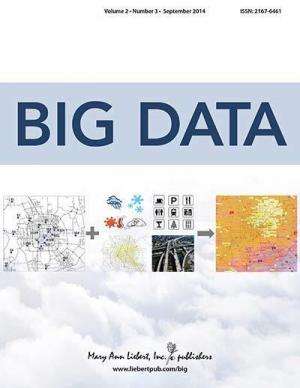Credit: Mary Ann Liebert, Inc., publishers
Cities around the world are increasingly making urban data freely available to the public. But is the content or structure of these vast data sets easy to access and of value? A new study of more than 9,000 data sets from 20 cities presents encouraging results on the quality and volume of the available data and describes the challenges and benefits of analyzing and integrating these expanding data sets, as described in an article in Big Data.
In the article "Structured Open Urban Data: Understanding the Landscape," Luciano Barbosa and Marcos Vieira, IBM Research, Brazil, and Kien Pham, Claudio Silva, and Juliana Freire, New York University School of Engineering and NYU Center for Urban Science and Progress, NY, present several promising findings. These include a steadily increasing volume of open urban data, the ability to integrate different data sets, and the finding that much of the available data is published in standard types of formats. The authors also discuss the main challenges that make it difficult to take full advantage of these data sources.
"Big urban data is a powerful new phenomenon that has the potential to transform everyday lives of hundreds of millions of people quickly via personal devices that integrate, filter, and create useful personalized information. This paper documents the sources and value of these data," says Big Data Editor-in-Chief Vasant Dhar, Co-Director, Center for Business Analytics, Stern School of Business, New York University.
More information: The Open Access article is available free on the Big Data website.
Provided by Mary Ann Liebert, Inc





















